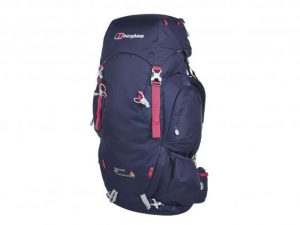A rucksack is your best friend on an expedition. Like a faithful dog it stays with you during the day and even follows you into your tent at night. The wonderful thing about your rucksack though is that it doesn’t bark or pee against lamp-posts.
Rucksacks unlike dogs don’t mind what you feed them. But the things you put inside a rucksack during an expedition might come back to bite you if they are too heavy or unnecessary.
A well organised rucksack isn’t just for those with a bit of OCD, it is essential for your comfort. It helps keep you warm as you spend less time stopping and starting, it also helps you keep your rhythm allowing you to be efficient in grabbing what ever you need quickly.
So how do you carry a rucksack properly and what are the day to day essentials you should always pack inside the beast and most importantly where…

Carrying a rucksack: Whether carrying a light daysack up Stok Kangri or a heavy load up Denali, it is good to remember that your legs have the strongest muscles in your body. Let them do the carrying by placing all the weight on your hips.
Every rucksack is fitted with a comfortable waist harness and shoulder straps (some have additional back-length adjusters that should be set accordingly).
After you have packed your rucksack, hoist it onto your back and adjust your waist-belt so that all the weight is sitting on your hips. Your shoulder-straps should be loose at this stage and adjusted so they fit snugly around your shoulders but are not weight bearing. Once in this position, your shoulder-straps act to pull the rucksack in-line with your back and stop the load from wobbling.
What to carry and where to carry it: on most expeditions your camping equipment will be carried by your porter team. It is with the help of these incredible people that many trekkers and climbers achieve their ambitions. Their carrying prowess does not let you off the hook. You will still need to carry a rucksack containing your day-to-day essentials in case the mountains decide to throw their worst at you. Don’t worry. If you just carry the essentials mentioned below your rucksack will rarely exceed 5kg. The same weight as a small dog.
Rucksack lid: usually they are quite roomy and easily accessible. If you are wearing your rucksack but need something quickly just ask your team buddy, or better still, slip your straps off your shoulder spin your rucksack around and access it yourself while staying on the move. This is a good self-sufficient style and worth practicing.
Inside the lid you should have the things that are regularly used. A head-torch, gloves, beanie or/and sun hat and sun cream.
The main rucksack compartment: is for the bulky stuff which is essential should the weather turn. Living permanently inside your rucksack should be a Goretex jacket and trousers, a light down-jacket or a thick fleece and a small grab-bag containing a pocket knife, water-purifying tablets, spare batteries for your torch, 2 metres of cord, sunglasses and goggles (in case there is bad weather on the mountain) a notebook and pencil. Within this main compartment is also the place to keep your small first aid kit. This needs to be kept in the depths of your bag (not in the lid) so to be protected from rain or from the heat of the sun as both can damage medications.
Water: because refilling happens quite regularly on most expeditions (streams or at every lunch stop) it is usually not necessary to carry more than 2 litres of water. Modern rucksacks have a specialist pocket build into internal back frame to allow a Platypus to be fitted. A small hole has been sewn into the main compartment to allow the Platypus tube to pass through and over your shoulder strap for the end bit to be placed conveniently near your mouth. If you’re going old school and prefer a water bottle, then place this either in the pockets on the side of the rucksack or put it on top of the load on the inside of the main compartment.
Side Pockets: most top of the range rucksacks come with plenty of pockets. Utilise the one on your waist strap or the one on the lower part of the main compartment for keeping the stuff you need directly to hand. Snacks, camera, small binoculars, I-pods, hand gel, lip salve and tissues. Side pockets are also useful to stuff rubbish into, to be placed in a bin when you get to camp.
Straps and Ice-axe loops: modern rucksacks have straps that make carrying specialist equipment such as crampons and ice-axes hassle free, within easy reach and safe. You will find a small loop sewn into the bottom of your rucksack to carry your ice-axe (your expedition leader will show you how) and side straps to secure your crampons, snow-shoes or ski’s
Rain cover. most rucksacks now come with a built-in rain cover. Check before buying as you will certainly want one of these.
Best ruck sacks on the market:
Berghaus Wilderness 65 Plus 15 Hiking Backpack
FREEFLOW 40 RUCKSACK
TRAILHEAD 60 RUCKSACK